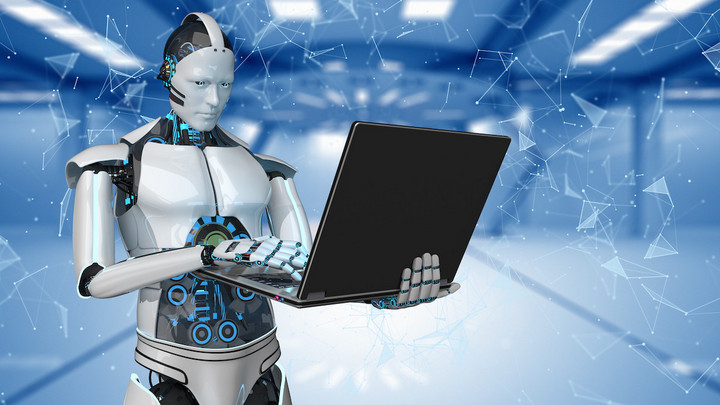Part of computer:-CPU
Part of computer What is CPU
The CPU, or Central Processing Unit, is a crucial component of a computer system. It serves as the "brain" of the computer, responsible for executing most of the instructions and calculations that make the computer operate. The CPU is responsible for performing tasks such as arithmetic and logic operations, data manipulation, and controlling the flow of data within the computer.
Here are some key functions and characteristics of a CPU:
Instruction Execution: The CPU executes instructions stored in the computer's memory, following a specific set of operations defined by a computer's architecture.
Arithmetic and Logic Operations: The CPU can perform basic arithmetic operations (addition, subtraction, multiplication, division) and logical operations (AND, OR, NOT) to process data.
Fetch-Decode-Execute Cycle: The CPU follows a sequence of steps called the fetch-decode-execute cycle. It fetches an instruction from memory, decodes it to determine what operation to perform, and then executes that operation.
Control Unit: The CPU's control unit manages the operations of the CPU, ensuring that instructions are executed in the correct order and that data flows smoothly through the various components.
Clock Speed: CPUs operate at a certain clock speed, measured in Hertz (e.g., gigahertz or GHz). A higher clock speed generally indicates faster processing capabilities, but other factors like architecture and multiple cores also affect performance.
Cores: Modern CPUs often have multiple cores, allowing them to execute multiple tasks in parallel. This is known as multi-core processing and enhances the CPU's multitasking capabilities.
Cache Memory: CPUs typically have small but high-speed cache memory to store frequently used data and instructions for quick access, reducing the need to fetch data from slower main memory.
Registers: CPUs have a set of small, high-speed storage locations called registers, which hold data and instructions during processing.
In summary, the CPU is the central component of a computer that performs most of the computations and controls the execution of programs and processes. It plays a critical role in determining the overall performance of a computer system
कंप्यूटर का भाग CPU क्या है?
सीपीयू, या सेंट्रल प्रोसेसिंग यूनिट, कंप्यूटर सिस्टम का एक महत्वपूर्ण घटक है। यह कंप्यूटर के "मस्तिष्क" के रूप में कार्य करता है, जो कंप्यूटर को संचालित करने वाले अधिकांश निर्देशों और गणनाओं को निष्पादित करने के लिए जिम्मेदार है। सीपीयू अंकगणित और तर्क संचालन, डेटा हेरफेर और कंप्यूटर के भीतर डेटा के प्रवाह को नियंत्रित करने जैसे कार्यों को करने के लिए जिम्मेदार है।
यहां सीपीयू के कुछ प्रमुख कार्य और विशेषताएं दी गई हैं:
निर्देश निष्पादन: सीपीयू कंप्यूटर के आर्किटेक्चर द्वारा परिभाषित संचालन के एक विशिष्ट सेट का पालन करते हुए, कंप्यूटर की मेमोरी में संग्रहीत निर्देशों को निष्पादित करता है।
अंकगणित और तर्क संचालन: सीपीयू डेटा को संसाधित करने के लिए बुनियादी अंकगणितीय संचालन (जोड़, घटाव, गुणा, भाग) और तार्किक संचालन (और, या, नहीं) कर सकता है।
फ़ेच-डिकोड-निष्पादित चक्र: सीपीयू चरणों के एक अनुक्रम का अनुसरण करता है जिसे फ़ेच-डिकोड-निष्पादित चक्र कहा जाता है। यह मेमोरी से एक निर्देश प्राप्त करता है, उसे डिकोड करके यह निर्धारित करता है कि कौन सा ऑपरेशन करना है, और फिर उस ऑपरेशन को निष्पादित करता है।
नियंत्रण इकाई: सीपीयू की नियंत्रण इकाई सीपीयू के संचालन का प्रबंधन करती है, यह सुनिश्चित करती है कि निर्देश सही क्रम में निष्पादित होते हैं और डेटा विभिन्न घटकों के माध्यम से सुचारू रूप से प्रवाहित होता है।
क्लॉक स्पीड: सीपीयू एक निश्चित क्लॉक स्पीड पर काम करते हैं, जिसे हर्ट्ज़ (जैसे, गीगाहर्ट्ज़ या गीगाहर्ट्ज़) में मापा जाता है। एक उच्च घड़ी की गति आम तौर पर तेज़ प्रसंस्करण क्षमताओं को इंगित करती है, लेकिन वास्तुकला और एकाधिक कोर जैसे अन्य कारक भी प्रदर्शन को प्रभावित करते हैं।
कोर: आधुनिक सीपीयू में अक्सर कई कोर होते हैं, जो उन्हें समानांतर में कई कार्यों को निष्पादित करने की अनुमति देते हैं। इसे मल्टी-कोर प्रोसेसिंग के रूप में जाना जाता है और यह सीपीयू की मल्टीटास्किंग क्षमताओं को बढ़ाता है।
कैश मेमोरी: सीपीयू में आमतौर पर त्वरित पहुंच के लिए अक्सर उपयोग किए जाने वाले डेटा और निर्देशों को संग्रहीत करने के लिए छोटी लेकिन उच्च गति वाली कैश मेमोरी होती है, जिससे धीमी मुख्य मेमोरी से डेटा लाने की आवश्यकता कम हो जाती है।
रजिस्टर: सीपीयू में छोटे, उच्च गति वाले भंडारण स्थानों का एक सेट होता है जिन्हें रजिस्टर कहा जाता है, जो प्रसंस्करण के दौरान डेटा और निर्देश रखता है।
संक्षेप में, सीपीयू कंप्यूटर का केंद्रीय घटक है जो अधिकांश गणना करता है और कार्यक्रमों और प्रक्रियाओं के निष्पादन को नियंत्रित करता है। यह कंप्यूटर सिस्टम के समग्र प्रदर्शन को निर्धारित करने में महत्वपूर्ण भूमिका निभाता है।







